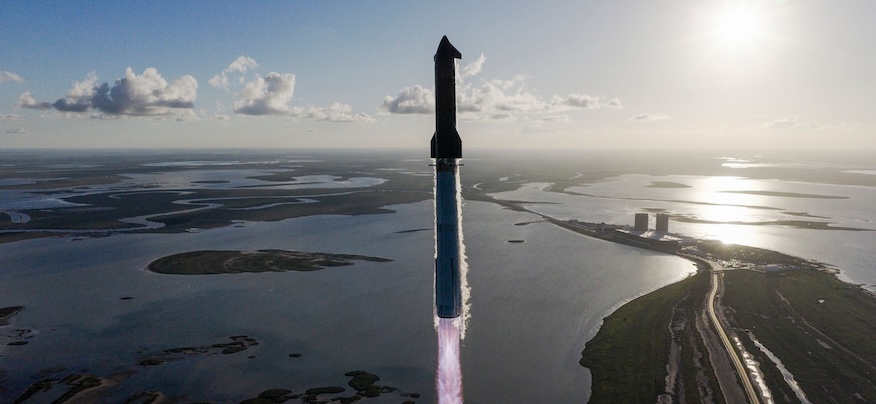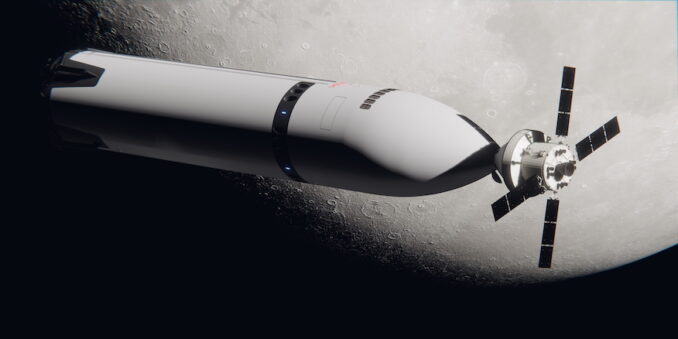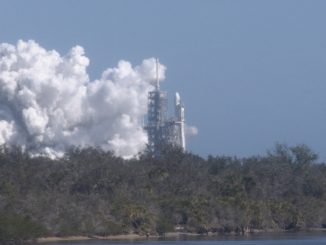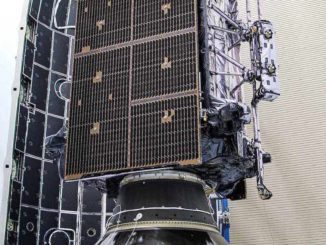
SpaceX closed a chapter in its Starship saga on Monday. It launched what appeared to be a nearly flawless suborbital mission with its Version 2 Starship-Super Heavy rocket, the final flight for this iteration of the launch vehicle.
The more than 400-foot-tall rocket thundered away from Pad A at Starbase at 6:23 p.m. CDT (7:23 p.m. EDT / 2323 UTC) to begin the roughly one-hour-long flight. The only notable hiccup during ascent was that one of the planned 13 Raptor engines on the Super Heavy booster, tail number B15, didn’t reignite during the boostback burn.
That engine did come back into play during the landing burn, which was a new configuration for SpaceX. It went from 13 to five to three engines before full cutoff and splashdown in the Gulf.
This was the second and final launch for B15. It first flew on Starship Flight 8 in March.
While the Starship upper stage, tail number S38, was making its way towards the Indian Ocean, it was able to jettison eight large metal rectangles meant to simulate the size and mass of future Starship Version 3 satellites. It also reignited one of the sea-level Raptor engines to simulate a de-orbit burn, which will be needed on future orbital missions.
The rocket made it through the point of peak heating as well as the greatest point of atmospheric pressure with the vehicle mostly in tact. One of SpaceX’s main goals was to learn more about the performance of its heat shield during the reentry process.
Splashdown confirmed! Congratulations to the entire SpaceX team on an exciting eleventh flight test of Starship! pic.twitter.com/llcIvNZFfg
— SpaceX (@SpaceX) October 14, 2025
“Great work by the @SpaceX team,” founder Elon Musk wrote on his social media site, X, following the conclusion of the mission.
This was the final Starship launch of the year and the last mission that will fly from Pad A in its current configuration. SpaceX now turns its attention to completing and testing Version 3 of Starship-Super Heavy, which will begin launch from Pad B.
It’s this iteration of the rocket that SpaceX intends to use for launching payloads to orbit and eventually flying missions to the Moon and Mars. To get to those missions beyond low Earth orbit though, SpaceX will need to master the ability to both transfer and store propellant in orbit.

NASA is counting on SpaceX to hammer out the logistics for this ship-to-ship propellant transfer system for missions connected to the Artemis program. SpaceX was awarded billions of dollars to perform landing operations for astronauts on the Artemis 3 and Artemis 4 missions.
Before that though, SpaceX needs to conduct an on-orbit propellant transfer demonstration, something that at one point was intended to happen in 2025. It’s unclear how many launches will be required to fill a tanker version of Starship that can then offload its propellant to a Human Landing System variant of the rocket for Moon-bound missions.
SpaceX is on contract to perform an uncrewed landing demonstration with a liftoff from the lunar surface prior to carrying crew onboard though the timing of this is unclear. The Artemis 3 mission is currently scheduled for mid-2027, just over a year after Artemis 2, which will not feature a Moon landing.



